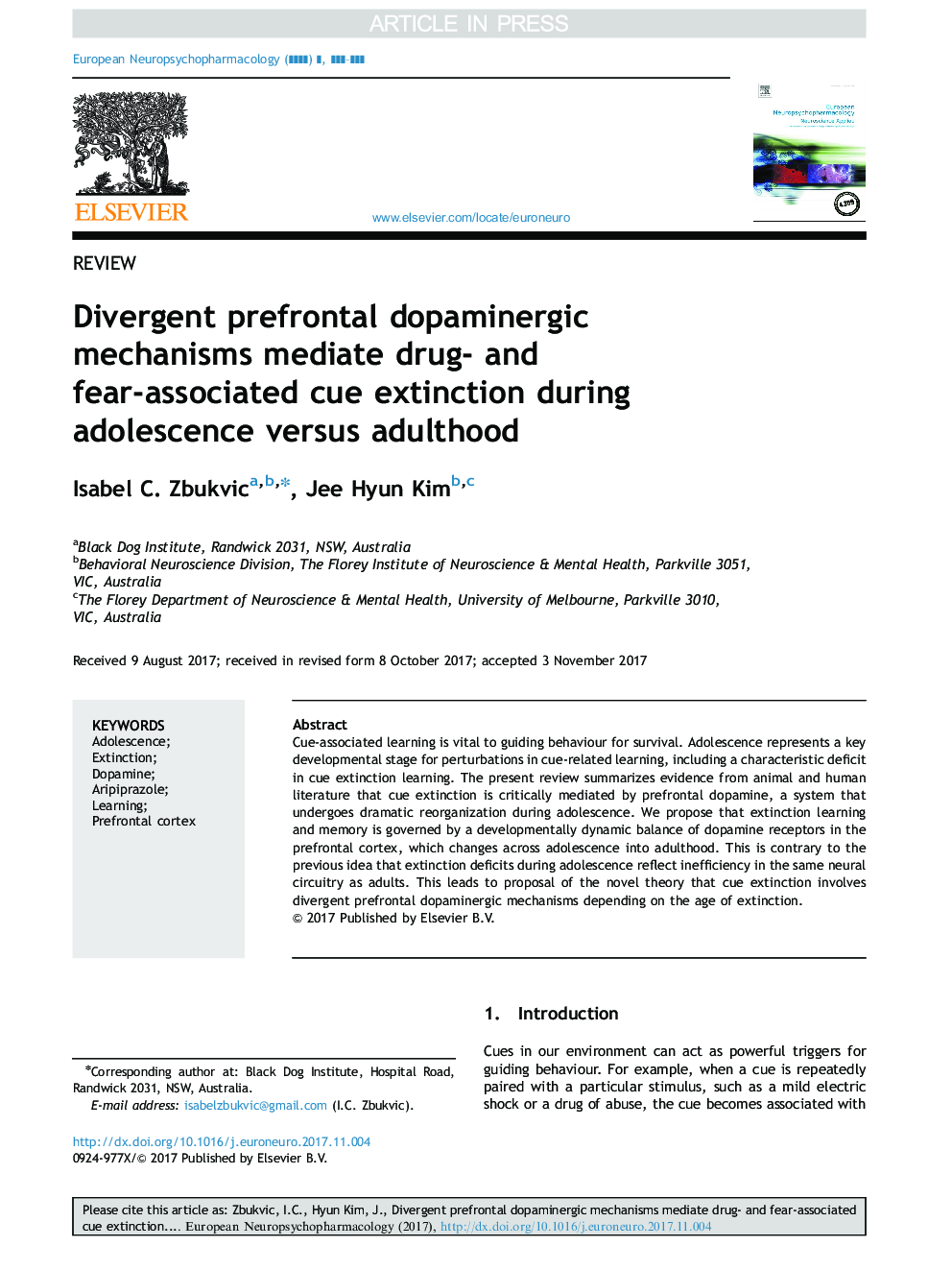| Article ID | Journal | Published Year | Pages | File Type |
|---|---|---|---|---|
| 6790894 | European Neuropsychopharmacology | 2018 | 12 Pages |
Abstract
Cue-associated learning is vital to guiding behaviour for survival. Adolescence represents a key developmental stage for perturbations in cue-related learning, including a characteristic deficit in cue extinction learning. The present review summarizes evidence from animal and human literature that cue extinction is critically mediated by prefrontal dopamine, a system that undergoes dramatic reorganization during adolescence. We propose that extinction learning and memory is governed by a developmentally dynamic balance of dopamine receptors in the prefrontal cortex, which changes across adolescence into adulthood. This is contrary to the previous idea that extinction deficits during adolescence reflect inefficiency in the same neural circuitry as adults. This leads to proposal of the novel theory that cue extinction involves divergent prefrontal dopaminergic mechanisms depending on the age of extinction.
Related Topics
Life Sciences
Neuroscience
Biological Psychiatry
Authors
Isabel C. Zbukvic, Jee Hyun Kim,
